Content
This is the html that we pulled from the URL. It’s been sanitized, so it will only contain safe tags.
'We ran as if to meet the moon.' - Robert Frost, 'Going For Water' (1915)
Generally speaking, the moon is about 225-250k miles from Earth. Landing on the moon in 1969 culminated a great American odyssey and was a colossal harbinger to the new technology era. Now well past Y2K, technology is our advanced way of life and Facebook, Inc. ( FB) has become relevant as the largest and most important human social network via the World Wide Web.
It wasn't always this way however. When I was in college in the mid-2000s, Facebook was only big on the east coast and very rare in California. I met a girl named Kim on the plane ride back from Hawaii in 2005 who was studying at New York University. Instead of offering her number, she asked 'Do you have a Facebook?'
I became curious however at that time, nobody I knew in San Diego had Facebook and everyone was using another network called MySpace. I ended up making a Facebook account later with my college email address but never found Kim and used it sparingly. MySpace was still trending hard.
By 2008 everyone my age and younger started gravitating towards Facebook, however the pack still held on to their MySpace accounts. Soon it became clear that more and more people were deleting their MySpace account, as there was no need for two separate networks with a remarkably identical purpose.
In looking back, I remember Facebook wasn't as cool for music, which was the one area that MySpace dominated. That was not enough to keep me enrolled, even though the account was free. Once my sister and a hoard of my friends deleted MySpace, I decided it was time for me to go as well.
Lessons Learned From Facebook Vs. MySpace
The whole concept and birth of the online social network was really cool. I can attest to it as a college student right in the heyday of it. MySpace was huge, everyone I knew in college and high school was on it and the company even sold to News Corp. ( NWS) ( NWSA) in 2005 for $580 million. Then Facebook came along, took over and became the 'it' thing for everyone from middle-school kids to baby boomers.
The most important lesson learned in the Facebook/MySpace debacle was the lack of need for two networks with the same purpose. It was a natural monopoly, kind of like an electric utility but without the government's blessing. MySpace lost for me because 'everyone else' moved to Facebook.
MySpace was destroyed by Facebook and has never been able to come back as a network, although Justin Timberlake did participate in the purchase of the site in 2012 for $35 million.
Why Instagram Is Facebook's Ticket To The Moon
While Facebook has been a success and is earning advertising revenues, my empirical research as an advertising executive dictates another story. While the user targeting method is very efficient and does cost a pretty penny, users generally do not participate and engage in the ads.
My thesis is that with Instagram, Facebook finally holds the key to effective advertising as their home site, facebook.com, is currently an inefficient and a poor choice of advertising dollars. On the contrary, Instagram is perhaps one of the best advertising platforms I've ever seen.
Facebook Ads Are Weak, Consumers Do Not Read Them
Have you ever opened a website and had music come on? Or had a pop-up screen asking for your info within a few seconds of opening a new page?
Strategies that used to be cool online are now annoying and inefficient. Viewers close websites with auto-play music as it conflicts with their harmony. Pop-up ads upon site entry are immediately closed when a customer sees them upon first linking to the site.
In essence, users are trained to avoid Facebook's online advertising. Like TV viewers fast-forwarding through advertisements on DVR-recorded content, online users avoid ads at all costs. They learn where the ads are in comparison to desired content and once that happens, unless the ads are very catchy the effectiveness is gone.
As a Facebook user, how often do you read the ads? Your mind is probably so swift at avoiding them that you may not realize how many ads are blared your way each time you are on the site.
I'm not saying digital advertising is ineffective. Google Inc. ( GOOG) is perhaps the best advertising resource in the history of mankind and it's 100% digital. My thesis dictates that with Facebook, users are trained to avoid ads under current conditions. Here is a basic (blurred for privacy) home feed on Facebook from January 2014.
(click to enlarge)
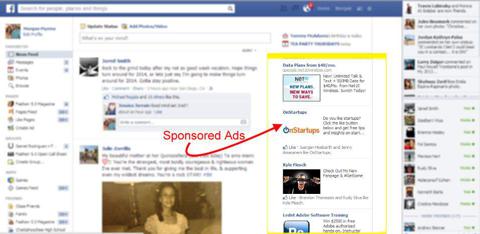
I highlighted the ad section with a yellow box. As you can see, the ads each have a small photo and a catchy phrase. In the past 2 years, I have only noticed these ads a handful of times. I've only clicked on them two years ago when looking into the Facebook's advertising efficiency for publishing-related research.
After I was done with my research, I've naturally avoided that section of ads. Perhaps if it was only one fashion ad, rather than a plethora of smaller, spam-looking ads, I would stray to that area of my feed. Facebook hasn't figured that out yet and in my opinion, most other users avoid this section as well.
In addition to sponsored ads on the right sidebar between the 'timeline' feed and the 'chat' window, advertisers also can buy placement in the timeline feed itself (page blurred again for privacy).
(click to enlarge)
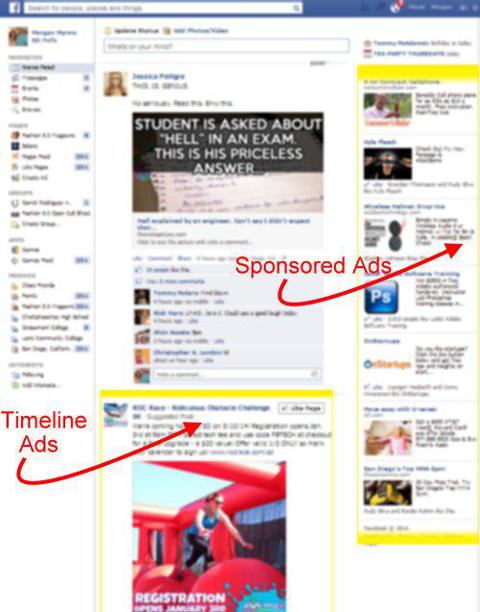
The timeline ads are usually the second story in the feed. Once again, site users know this is sponsored and then scroll quickly to the next 'real' story in their feed. Humans are quite capable of ignoring content here, however on the bright side for Facebook, these ads are more likely to be seen whereas the sidebar sponsored ads more easily and naturally avoidable.
Criticism Of Facebook Ads
The marketplace is rife with companies that have spent money with Facebook only too see a negative return. The largest U.S. advertising group is the auto industry and is the most-highlighted, high-profile domestic marketing faction to publicly denounce Facebook.
General Motors Company ( GM) questioned spending money with Facebook in 2012, just before the IPO, stating that the ads were ineffective. With an upcoming IPO and coverage with The Wall Street Journal, this story gained a lot of traction.
Other poor reviews include a mock campaign with poor response conducted by the BBC, as well as a Reuters poll that also deemed Facebook advertising as ineffective.
Another criticism of Facebook advertising is the lack of common ground between users and businesses. Users elect to follow a business, yet they do not see the business feed. Facebook now charges businesses to reach not only targeted users but also the very audience that already has 'liked' the brand. Users will not see many pages they like, if ever, unless the business pays for it.
In this regard, Facebook for businesses has become more of a 'social homepage' that users can look up instead of leaving Facebook for Google or another search engine, rather than a conducive, interactive platform for their registered base.
Facebook Promoters Are Profiting Here, Not Facebook
Instead of Facebook making money here, businesses are keen to pay popular local personalities with a high degree of online social clout. By hiring a promoter, businesses get huge engagement as an added bonus through their employment roster and thus bypassing the appeal of paid social media advertising.
This has changed the landscape in trendy industries, such as nightlife and entertainment, as popular personalities are hired to work in addition to reaching others though their own social networks. For example, a nightclub would prefer to hire a bartender or manager who has thousands of Facebook fans, rather than pay to reach a similar base with a paid reach. In this regard, emphasis is placed on 'who you know,' rather than 'what you know.'
Instagram Will Be The New Vogue Of Mobile Advertising
In 2012 Instagram really took off. I noticed it because my younger, college-aged coworkers told me I had to get on it. Soon after I created an account and then noticed my entire network was migrating to it. Just like Kim from NYU who asked me if I had a Facebook, one of our interns said 'Morgan, we need to get Instagram. Everyone has it. Do you have one?'
Keeping in touch with the college group, our business achieved an immediate Instagram base of several hundred college-aged users before our competition even registered a free account. Many top bars and nightclub accounts we worked with didn't have Instagram yet, which earned us 'kudos' as a bonus presentation during advertising meetings.
Unlike MySpace, which was (rest in peace) the same type of service as Facebook, Instagram is completely different. It's primarily mobile and users must upload a photo as their message, which can be accompanied by words, symbols and hashtags. It's sort of an immature Twitter, Inc. service ( TWTR) that requires a photo to accompany a message, however it has no length restrictions and does not hyperlink URLs.
Instagram has growing pains, however, which Facebook is perhaps looking to fix before going full force on paid marketing. Like MySpace, Instagram is rife with fake users, imposter brand/celebrity accounts and a difficult search environment for brands and celebrities (try looking up Ryan Seacrest for example).
On the positive side, Instagram is a very attractive personal network of friends, brands and celebrities/heroes. I think of Instagram as the mobile, social network magazine.
On Instagram, users only see one status/photo at a time in the feed, which will make ads stand out. Users are trained to look at each photo, notice the author and text, then either continue scrolling or engage with a like, comment or participation with a hashtag or profile link.
Cellphone Screenshot Example Of Instagram's User Feed

As ads here will be stand-alone, like a magazine but with one page, advertisers will be guaranteed that users will witness the ad. Unlike Facebook, where users have an option to engage and are naturally trained to avoid ads, Instagram users will have no choice.
In this respect, users will be more likely to engage the ad through a follow, like, comment or hyperlinked URL. Higher engagement rates makes each placement worth more to the advertiser, which in turn will lift costs higher as demand increases.
In addition, targeted ads that are guaranteed to reach a specific audience are worth more. While Facebook ads are largely social 'junk mail' that users are trained to avoid, Instagram ads may be defined as high-quality, engageable magazine-style content.
When content algorithms are figured out, I imagine an incredible amount of revenue is possible. For example, women who hashtag fashion or engage in #fashion, are within a target location (such as the U.S.) and are within a certain age group (such as 18-24) would be susceptible to all types of fashion ads similar to ones that readers would see in the pages of Vogue.
The digital prowess here is incredible as Instagram ads would be fine-tuned and immediately engageable, thus leading to personal feelings transmuted via likes, comments and new followers.
Instagram ads with URLs will lead to purchases via mobile devices, which aims to be the hottest new medium of purchasing this century.
According to Internet Retailer, a portal to e-commerce intelligence in the U.S. alone 196 million people are expected to shop online by 2016, with average annual per-capita spending of $1,738 that totals $327 million.
According to IBM, in 2013 mobile browsing represented 39.7% of all online traffic on Black Friday. IBM noted that online customers referred through Facebook and Pinterest spent an average of 77% more per order and that mobile sales accounted for 25.8% of all online sales, up from 21.8% on Black Friday in 2012.
QVC, the third-largest online retailer in terms of sales in 2013 behind only Apple Inc. ( AAPL) and Amazon.com ( AMZN) also showcased tremendous online and mobile growth in Q3 2013 versus Q3 2012. A few statistics include:
- Web sales up 11.7% to $535 million
- Domestic Web sales 41.2% of total sales of $1.3 billion
- Global mobile sales up 39.4% to 636.7 million
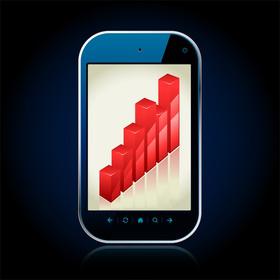
With these trends showcasing strong online growth, higher mobile sales as a percentage of total online sales and higher per-order sales routed through social networks, investors can be certain that Facebook is looking to capitalize with mobile marketing on Instagram in 2014.
Threats To Instagram
Of course, threats include a new Instagram competitor and other social networks, such as Vine, Twitter, FourSquare and Snapchat.
Vine is the 2013 video-only social network upstart sponsored from Twitter. The company made a big splash last year but failed to catch on. In response, Instagram added video content and Vine popularity immediately declined.
Vine Screenshot On Mobile Phone

Unfortunately Vine limits users to video clips and as such, users cannot upload photos alone. After one year, the empirical evidence shows that in the U.S., the demand for stand-alone video proved insufficient to compete with Instagram or catch on in a major fashion among mobile users.
Twitter is a much different type of service and although it is popular, the service does not really compete with Instagram. Also, it seems that the younger, trend-setting mobile users are very much engaged in Instagram and are less swayed by Twitter's limited social service. Although Twitter does offer cropped, filtered photo uploads, it just does not compete with Instagram. With multiple status updates available at once, marketing is also easier to avoid versus Instagram.
Twitter Screenshot On Mobile Phone
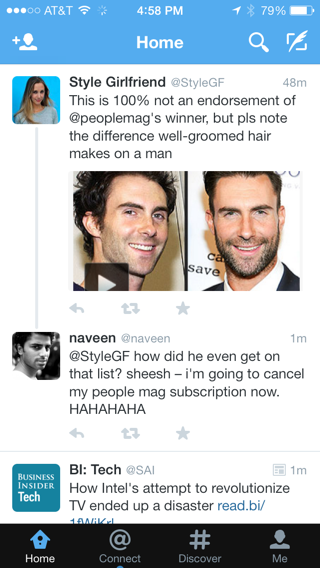 Foursquare
FoursquareFoursquare is a location-based check-in service, is practically obsolete and does not interest many users these days. Users can upload a photo, however the incentive to download the application is not very large.
Foursquare Screenshot On Mobile Phone
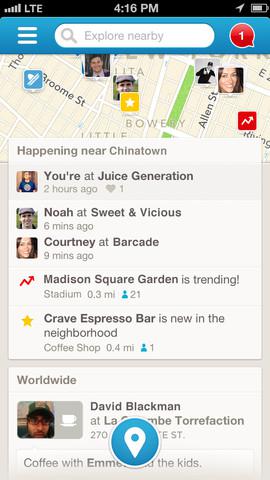
Besides Twitter and Foursquare, there is no other large-scale photo-sharing/editing engageable social networks in the U.S.
Privately-owned Snapchat may be seen as the biggest threat to Instagram. The company could deal a huge blow to Instagram's engageable photo-sharing, social network leadership position with a modification to include a permanent photo/video feed with editing tools and social media interaction capabilities.
Two Screenshots Of Snapchat's Application On Mobile Phone
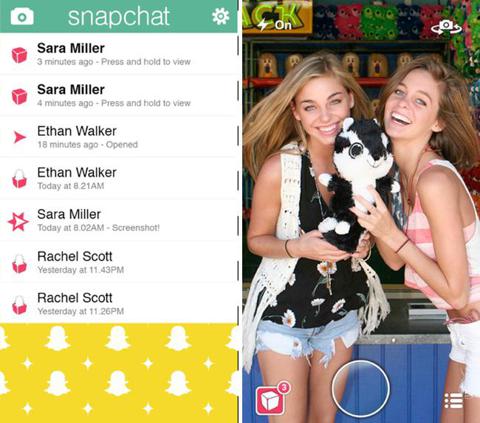
A move from Snapchat's cloaked, private social network to a public, engageable one may be a challenge worth entertaining. As of October 2013, Nielsen estimated that 13 million people were sharing content on Snapchat, versus 6 million on Vine.
Conclusion
Due to the poor nature of FB ads and the incredible prospects of Instagram ads, as well as Instagram's rising popularity and the high-value advertisers will pay for targeted, mobile social marketing, the Instagram division at Facebook may be worth more than the Facebook brand itself in terms of revenue and profitability.
While Snapchat remains a huge, credible threat, Instagram is the market leader and once the move to advertising is complete, revenues may pour in, exceeding investor's wildest expectations and thus transforming Facebook's stock into a Virgin Galactic spaceship headed straight for the moon.
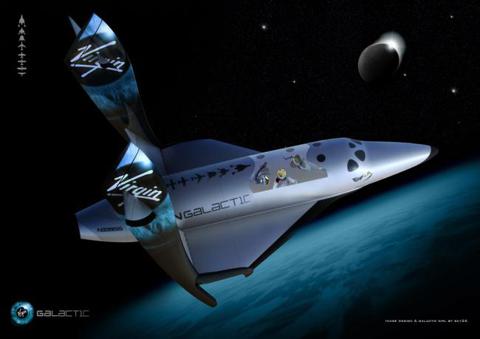
Tidak ada komentar :
Posting Komentar